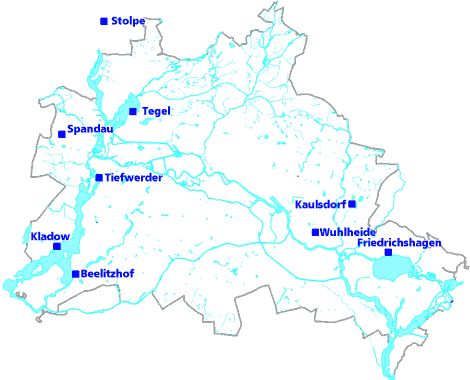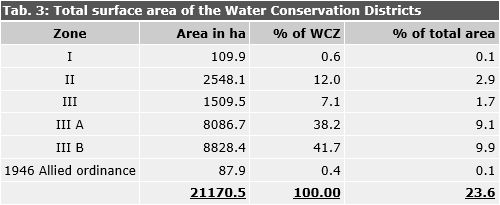All the drinking water for Berlin – 100 % of some 205 million cu.m. in 2008 – is obtained from groundwater. Moreover, the groundwater resources were tapped by private and industrial water users, as well as for large-scale groundwater retention measures for construction projects, groundwater redevelopment measures and heat use. The Spandau, Tegel, Tiefwerder, Beelitzhof, Kladow, Wuhlheide, Kaulsdorf and Friedrichshagen waterworks, which are currently used to supply Berlin’s drinking water, are located in the Warsaw-Berlin Glacial Spillway or the Havel Channel (Fig. 4). Only the Stolpe waterworks north of Berlin takes its water from the State of Brandenburg, and sends to the city water amounting to a maximum of 9 % of the total discharge of the BWB for the public water supply of Berlin. It is maintained by the BWB, and is also responsible for providing drinking water to several nearby Brandenburg communities.
Water Conservation Districts 2009

Fig. 4: Location of the nine waterworks currently supplying Berlin with drinking water
Image: Umweltatlas Berlin

Tab. 3: Total surface area of the Water Conservation Zones (WCZ) (without consideration of the general disposition Johannisthal)
Image: Umweltatlas Berlin
